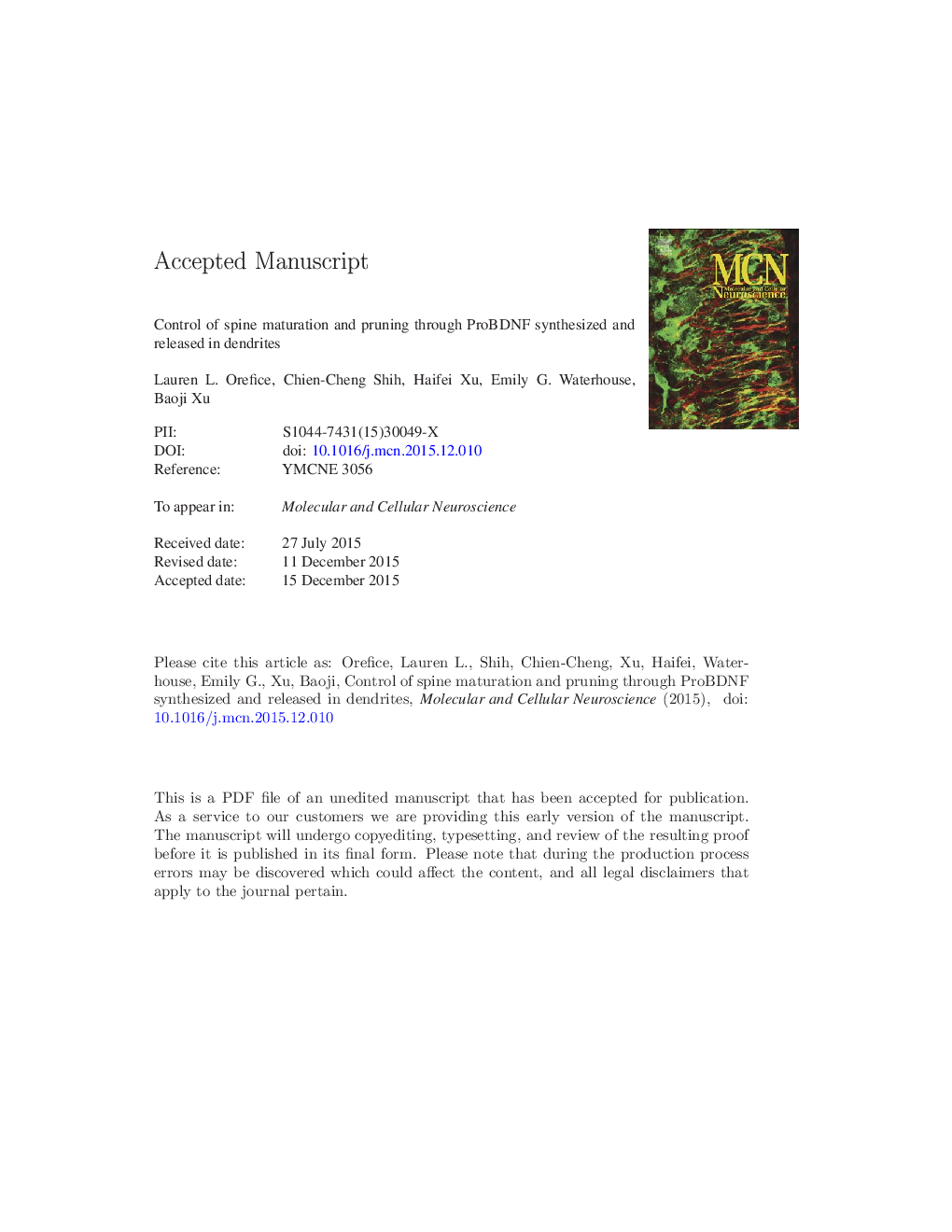| Article ID | Journal | Published Year | Pages | File Type |
|---|---|---|---|---|
| 8478502 | Molecular and Cellular Neuroscience | 2016 | 49 Pages |
Abstract
Excess synapses formed during early postnatal development are pruned over an extended period, while the remaining synapses mature. Synapse pruning is critical for activity-dependent refinement of neuronal connections and its dysregulation has been found in neurodevelopmental disorders such as autism spectrum disorders; however, the mechanism underlying synapse pruning remains largely unknown. As dendritic spines are the postsynaptic sites for the vast majority of excitatory synapses, spine maturation and pruning are indicators for maturation and elimination of these synapses. Our previous studies have found that dendritically localized mRNA for brain-derived neurotrophic factor (BDNF) regulates spine maturation and pruning. Here we investigated the mechanism by which dendritic Bdnf mRNA, but not somatically restricted Bdnf mRNA, promotes spine maturation and pruning. We found that neuronal activity stimulates both translation of dendritic Bdnf mRNA and secretion of its translation product mainly as proBDNF. The secreted proBDNF promotes spine maturation and pruning, and its effect on spine pruning is in part mediated by the p75NTR receptor via RhoA activation. Furthermore, some proBDNF is extracellularly converted to mature BDNF and then promotes maturation of stimulated spines by activating Rac1 through the TrkB receptor. In contrast, translation of somatic Bdnf mRNA and the release of its translation product mainly as mature BDNF are independent of action potentials. These results not only reveal a biochemical pathway regulating synapse pruning, but also suggest that BDNF synthesized in the soma and dendrites is released through distinct secretory pathways.
Keywords
Related Topics
Life Sciences
Biochemistry, Genetics and Molecular Biology
Cell Biology
Authors
Lauren L. Orefice, Chien-Cheng Shih, Haifei Xu, Emily G. Waterhouse, Baoji Xu,
